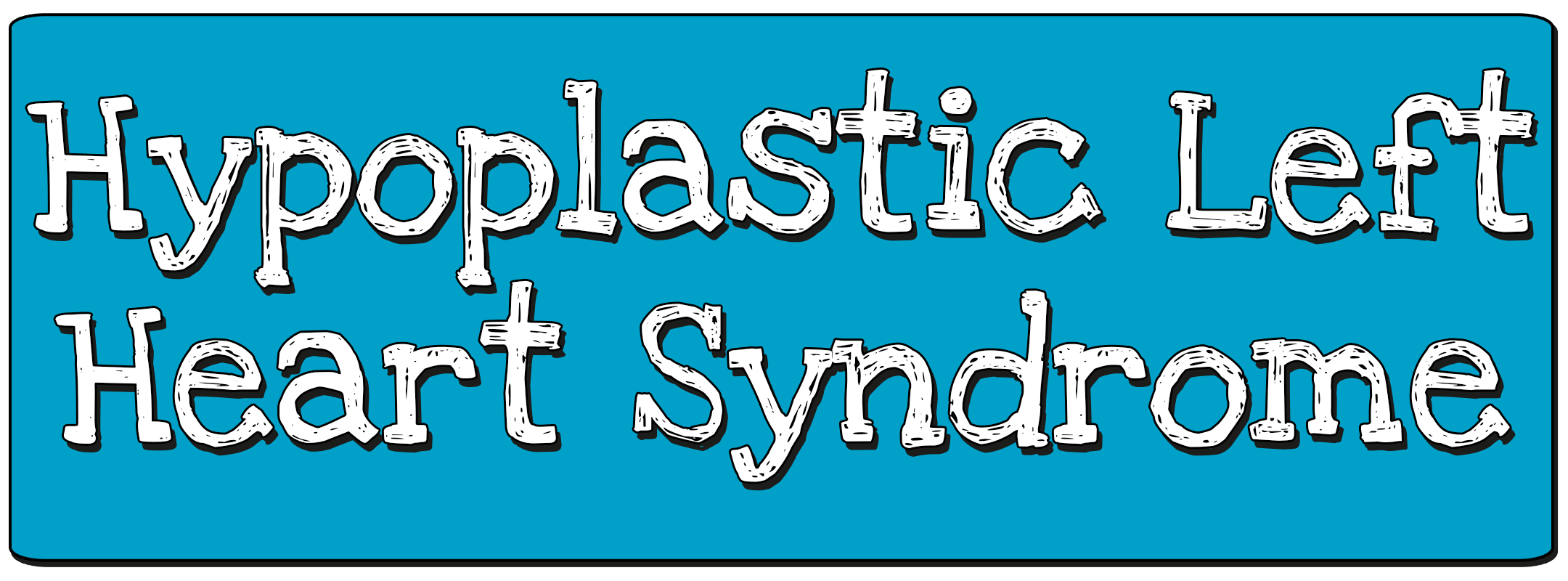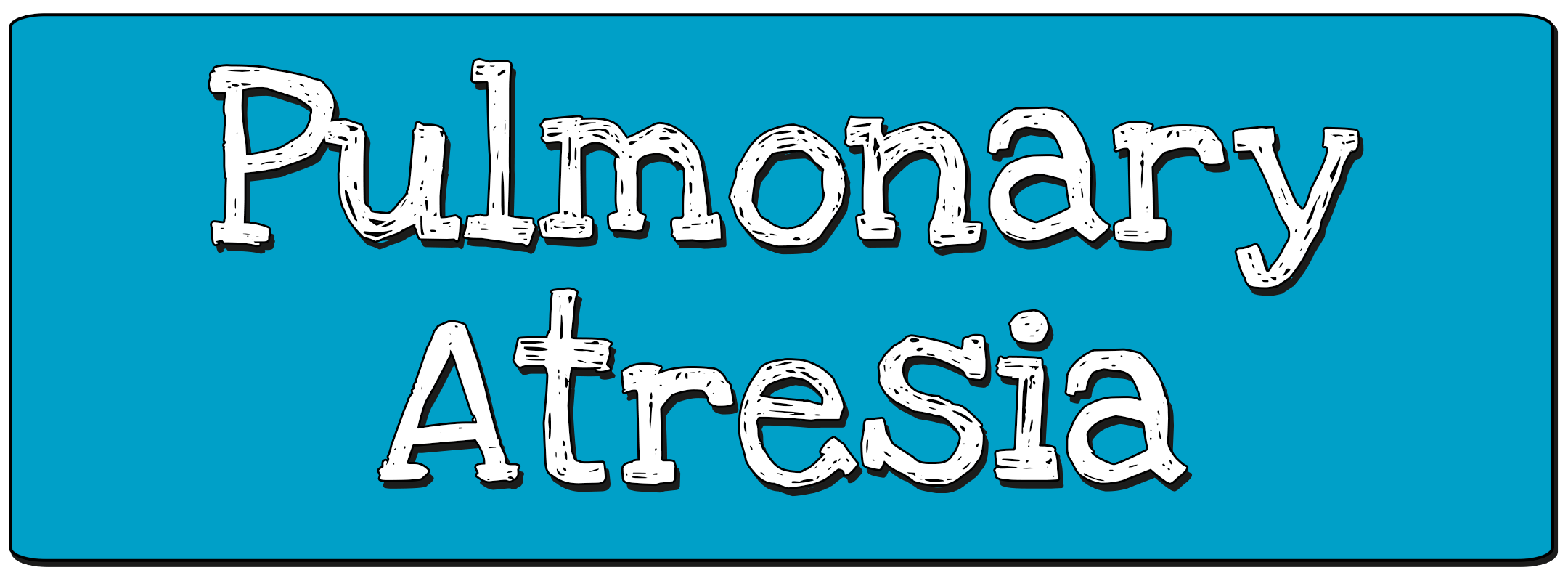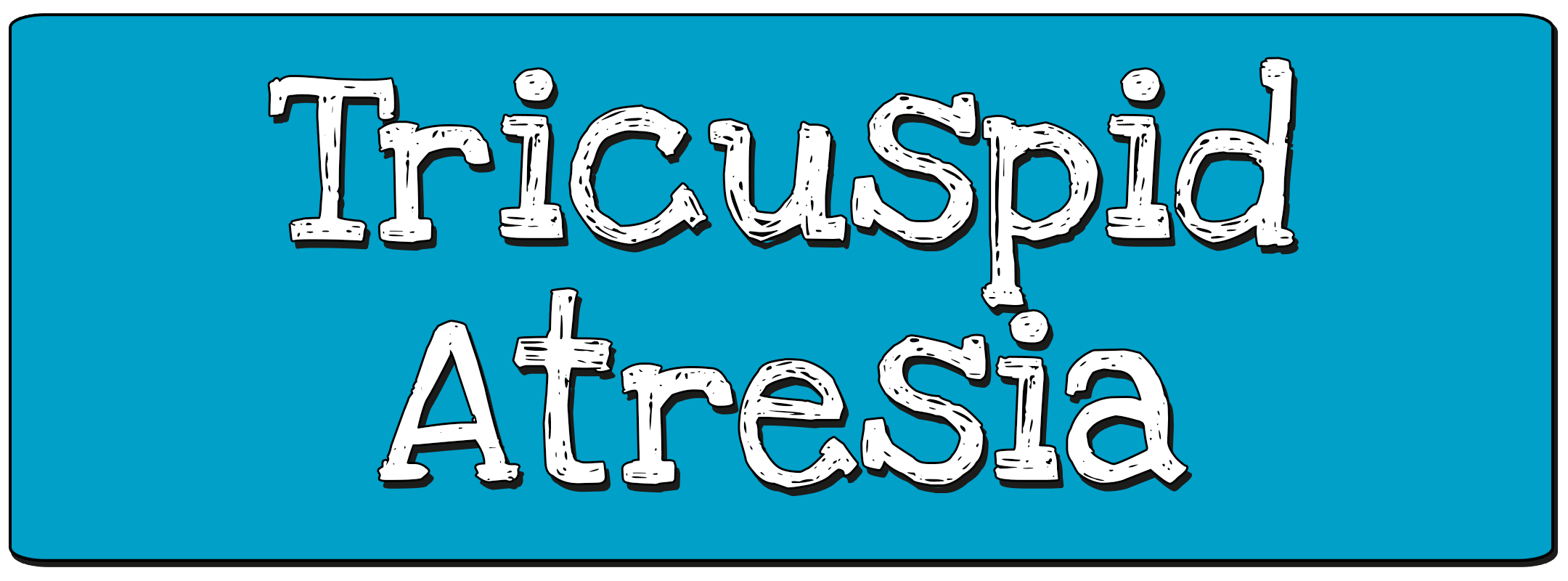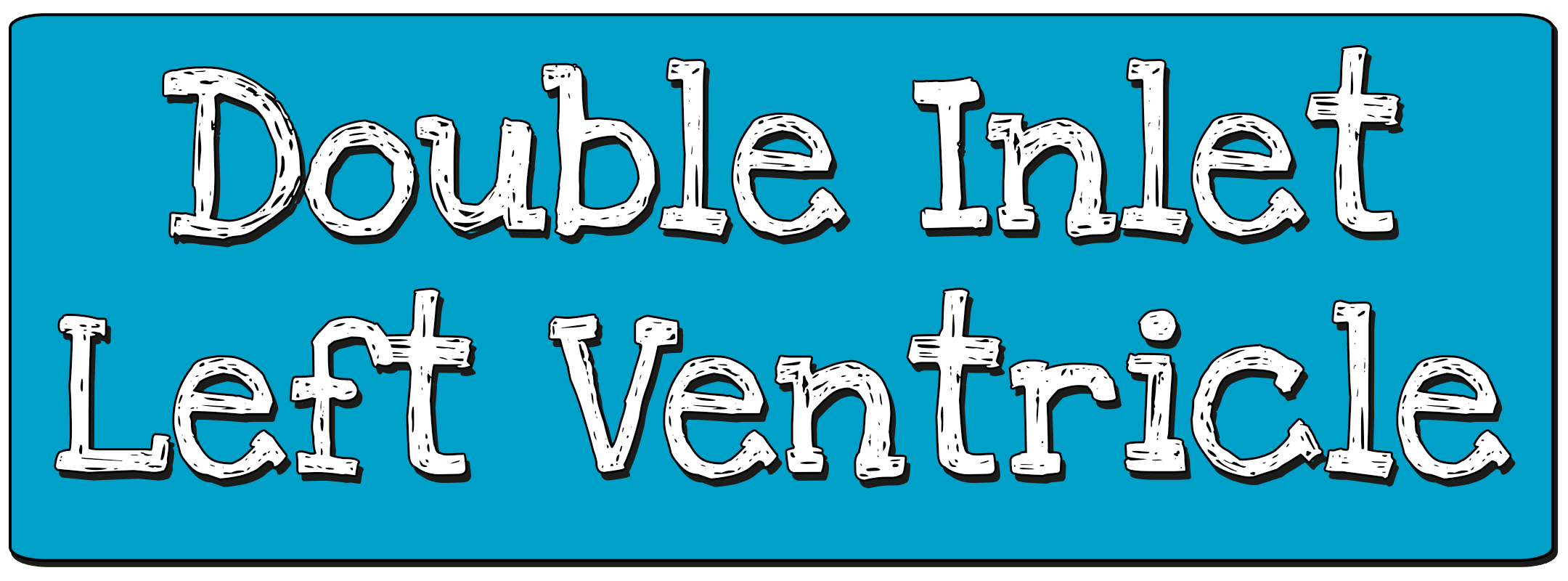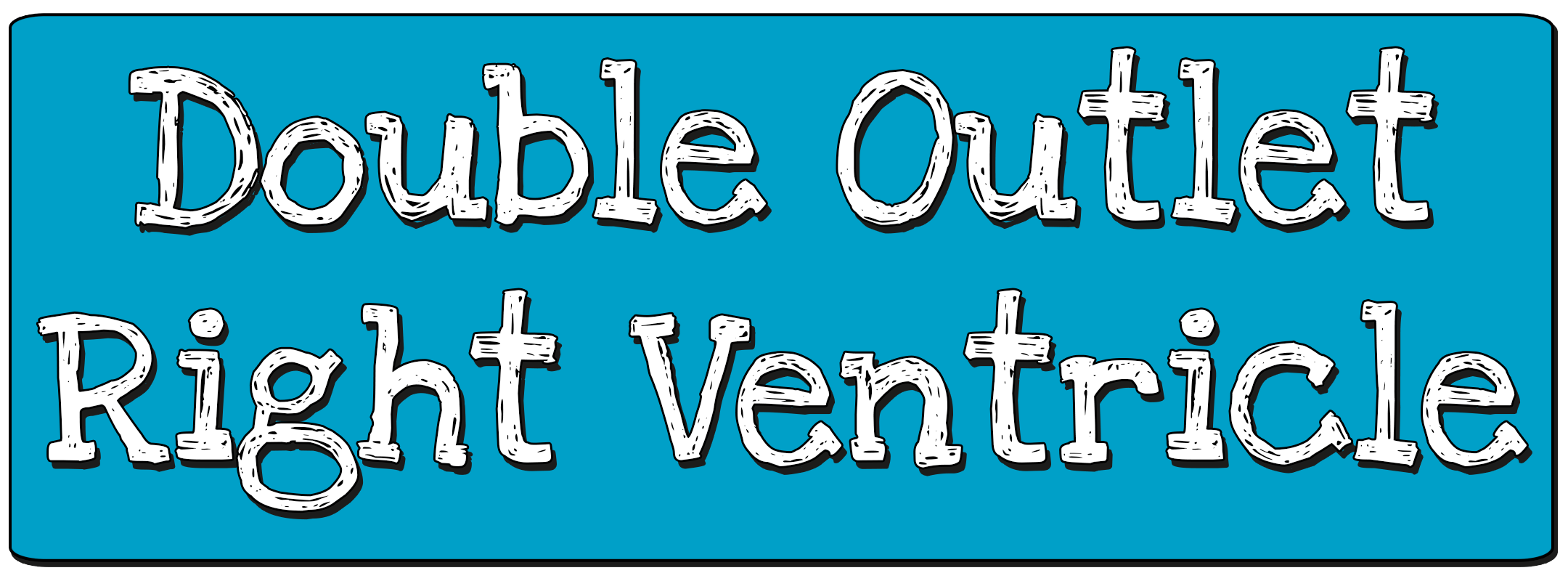
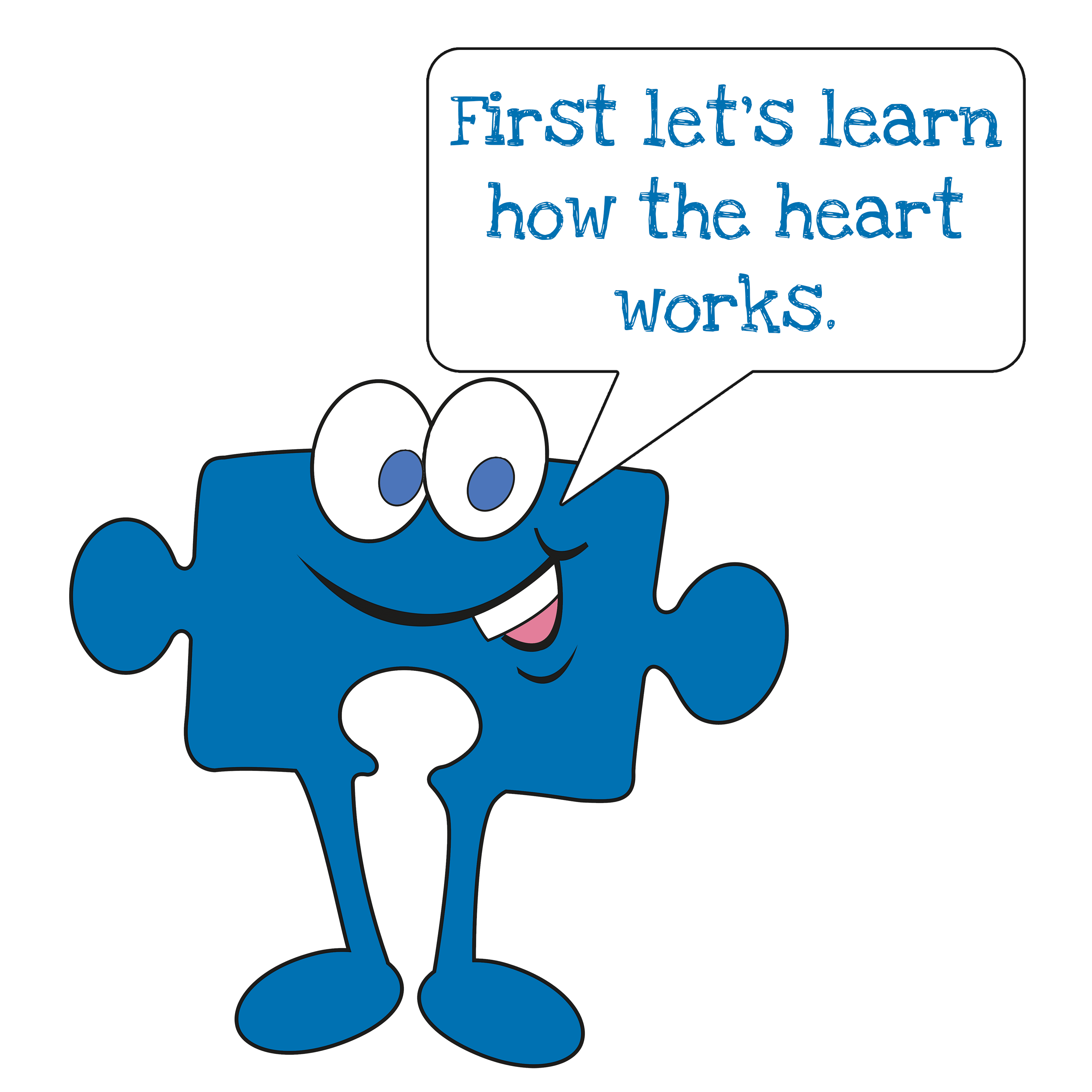
How the heart works
Understanding your heart and how it works is really important for everyone. When you have a heart that works differently from your friends, it becomes even more important to understand how blood gets pumped around your body. Before you can learn about your special heart you need to understand what the heart is there for. After every explanation, you will see words in brackets ( ). These words are the words that the doctors will use so read the simple and medical words so you can show them what you have learnt next time you go to see them.
Here we go…..
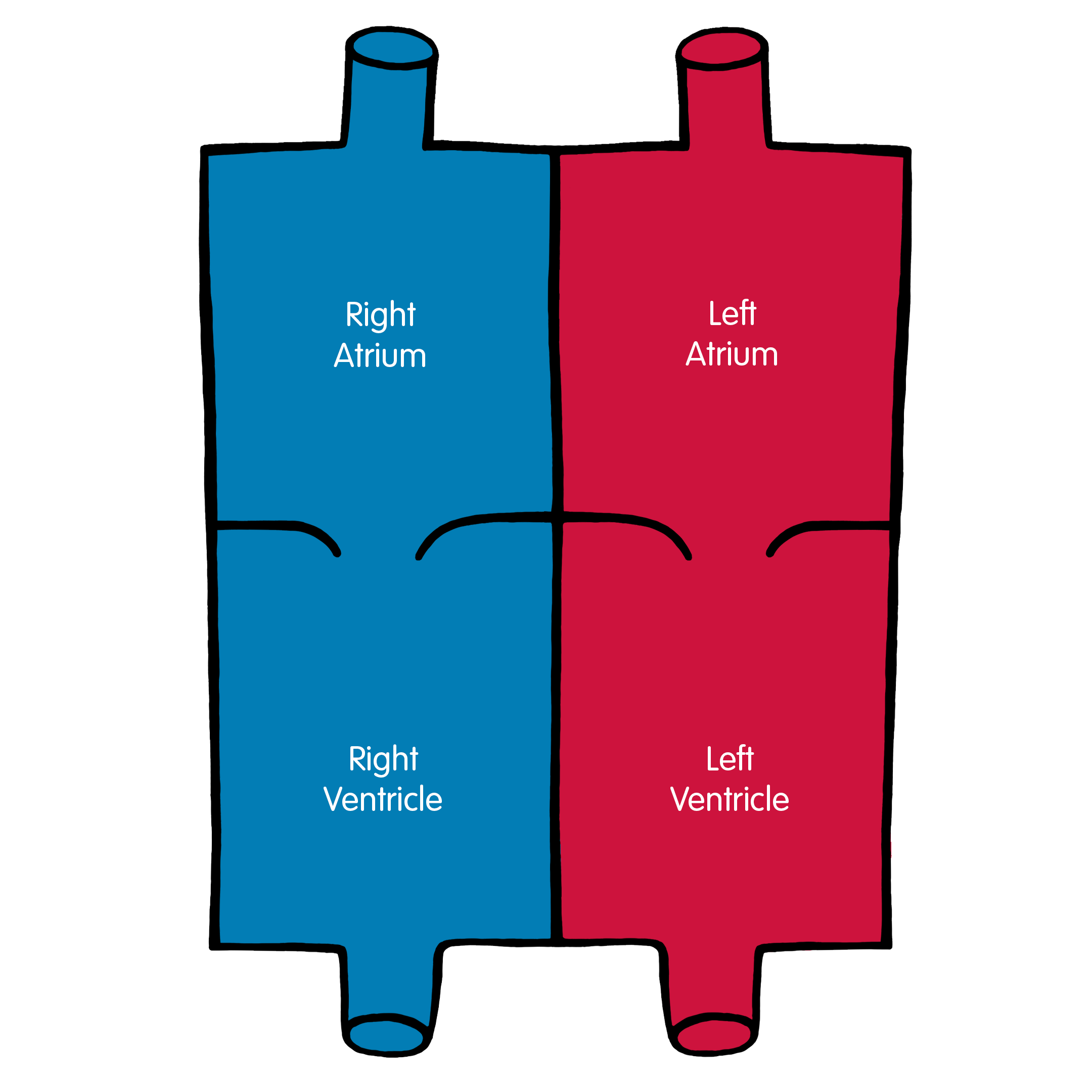
Lots of people use a picture of a heart to express their love for someone. Heart emojis and hearts on clothes, Valentine’s cards and heart-shaped balloons all show hearts in a simple way. We know that the heart, and the way it works, is a bit more complicated. The heart’s job is to collect and then pump blood. Blood, arteries and veins are a very important transport system, yes, a bit like roads.
As blood journeys around your body, it picks up important things that you need to make energy. It then takes them to every part of your body. Smart! It collects oxygen from your lungs and food and drink from your gut. When your body has used up the bits it wants, it sends everything that is not needed to be breathed out from your lungs, peed out by your kidneys or
destroyed in your liver.
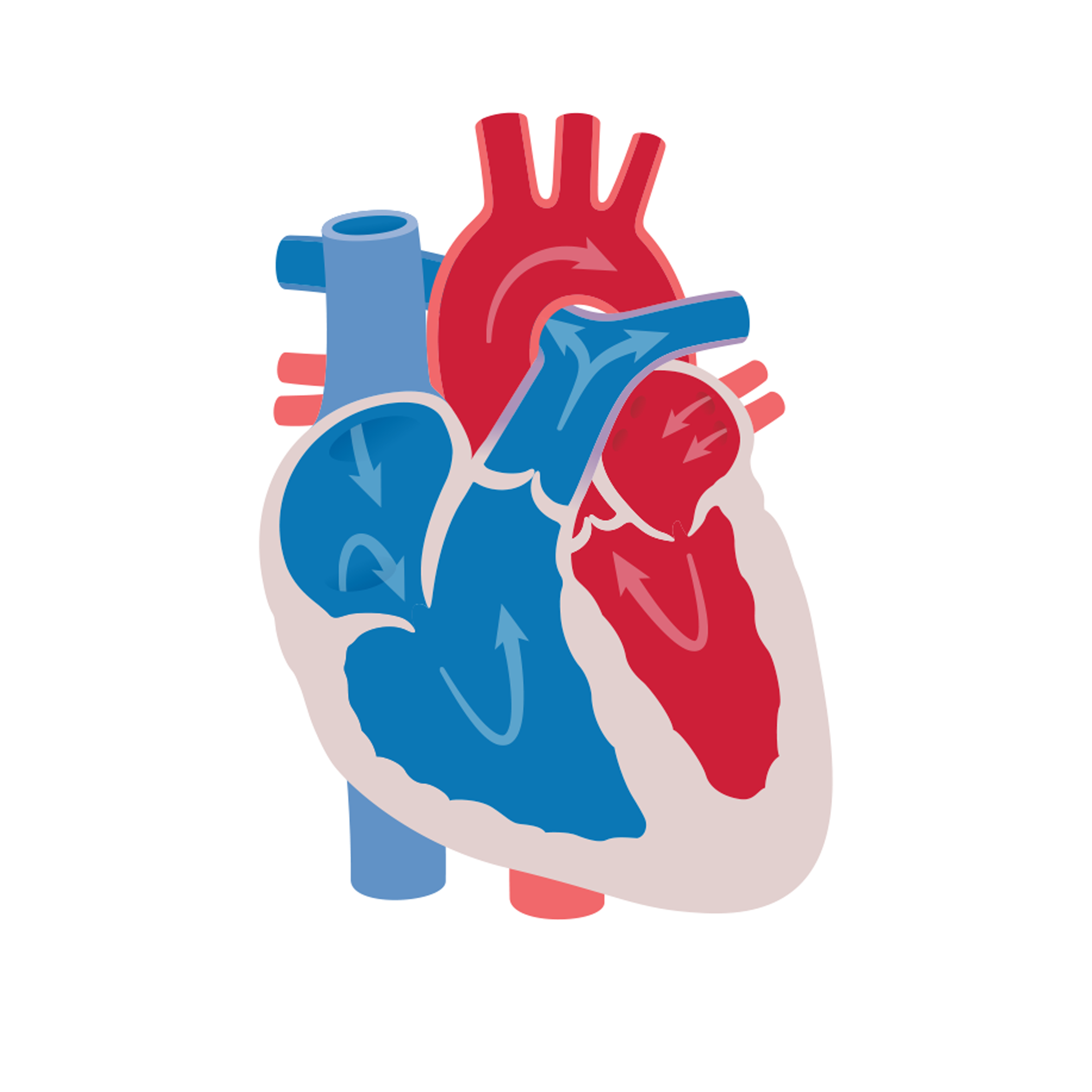
OK back to the heart.
There are two sides to the heart. The right side, your right side, collects and then pumps blood to the lungs. Remember this is where the blood picks up oxygen. Once the blood is as full of oxygen as possible it travels to the left side of the heart, which collects it and then pumps it round the body.
OK, now we are going to take a journey through the heart. Look at the picture of the heart and imagine you are a little red blood cell.

George the red blood cell
George has joined up with his other friends in the blood. They are all travelling from the head and neck and body towards the right side of the heart.
They all whoosh into a collecting chamber (the doctor’s name is the atrium). George can’t rest though because suddenly the heart squeezes and pushes him, and his friends, through a door (in a heart this is called a valve) into a bigger chamber, the pumping chamber (the doctors’ name is a ventricle).
They know they won’t be staying long. The heart squeezes really hard and they are all pushed through another door (valve) and on up into a big blood vessel (the Pulmonary Artery) into the lungs. George has lost his friends as they all whizz off in different directions but George can’t worry about them because he has a job to do. He has to collect oxygen and get rid of gasses that he doesn’t want in his body.
George's journey continues...
He can feel himself filling up, just like a car filling up with petrol. He is turning bright red and he feels full of new energy.
“Yippee,” he shouts as he whizzes from the lungs down to the left side of the heart. He meets all his friends again in the collecting chamber at the top of the left side of the heart. He won’t be there long, the heart squeezes and George and his friends are pushed through a door (heart valve) into a huge pumping chamber. It feels big and strong.
Everyone says a quick goodbye because they know that the heart is ready to squeeze and send us all up a big blood vessel (the Aorta) and then out of the heart.
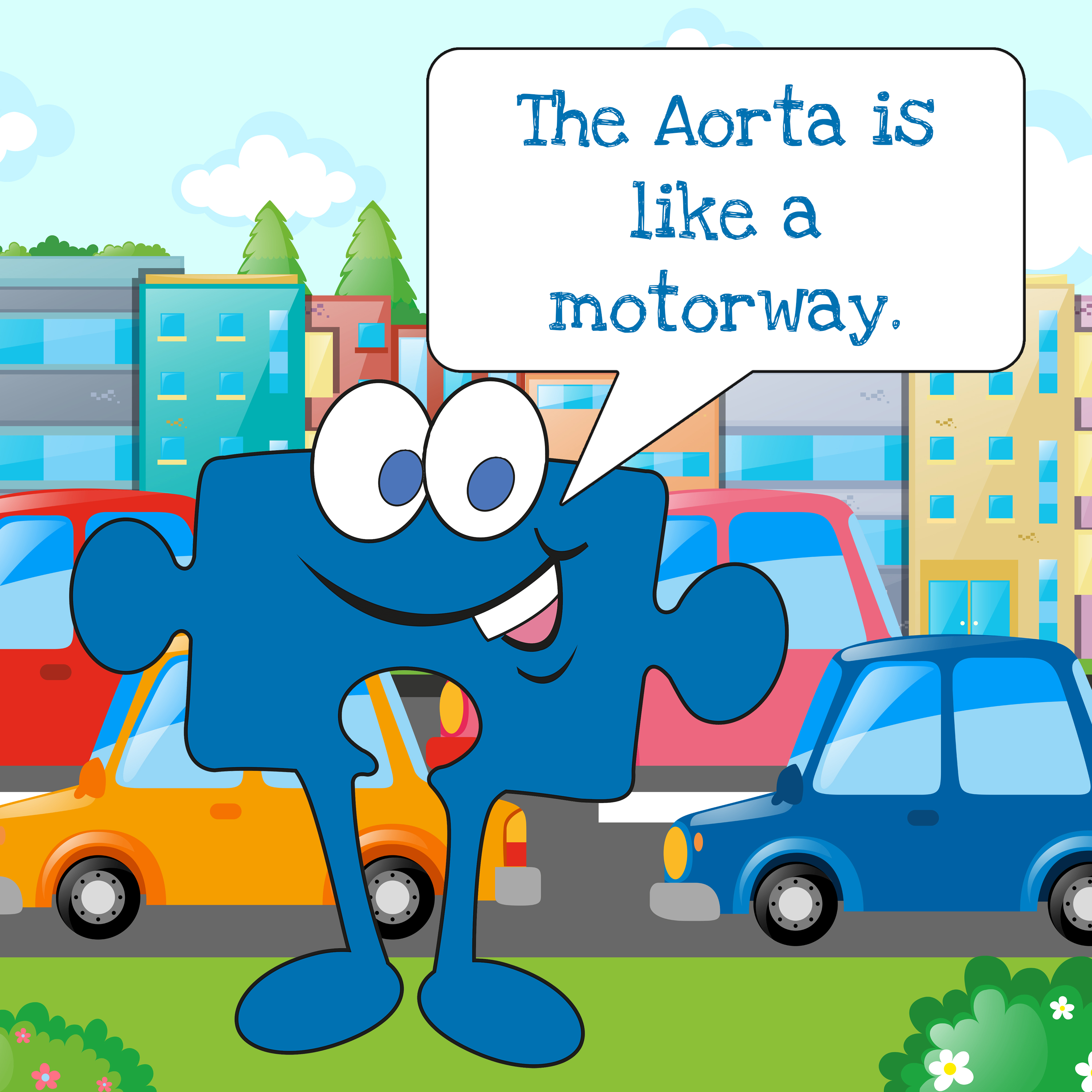
The Aorta is like a motorway
The Aorta is like a motorway. It is the biggest blood vessel in the body and it leads George and his friends out of the heart and then sends them off down other big blood vessels to the brain, kidneys, and gut taking blood to every part of the body. Think of it as a road system, a motorway, big A roads, small B roads and then, by the time you reach the fingers, very small tracks.
George knows that all his oxygen will be used up as he travels because the body needs it to make energy. Gradually, as all the oxygen is used up, George begins to look a bit blue and he knows it is time for him to travel back to the heart and lungs to start the journey again.
Your heart
Now that you know how the normal heart works, click below to learn more about your heart.
